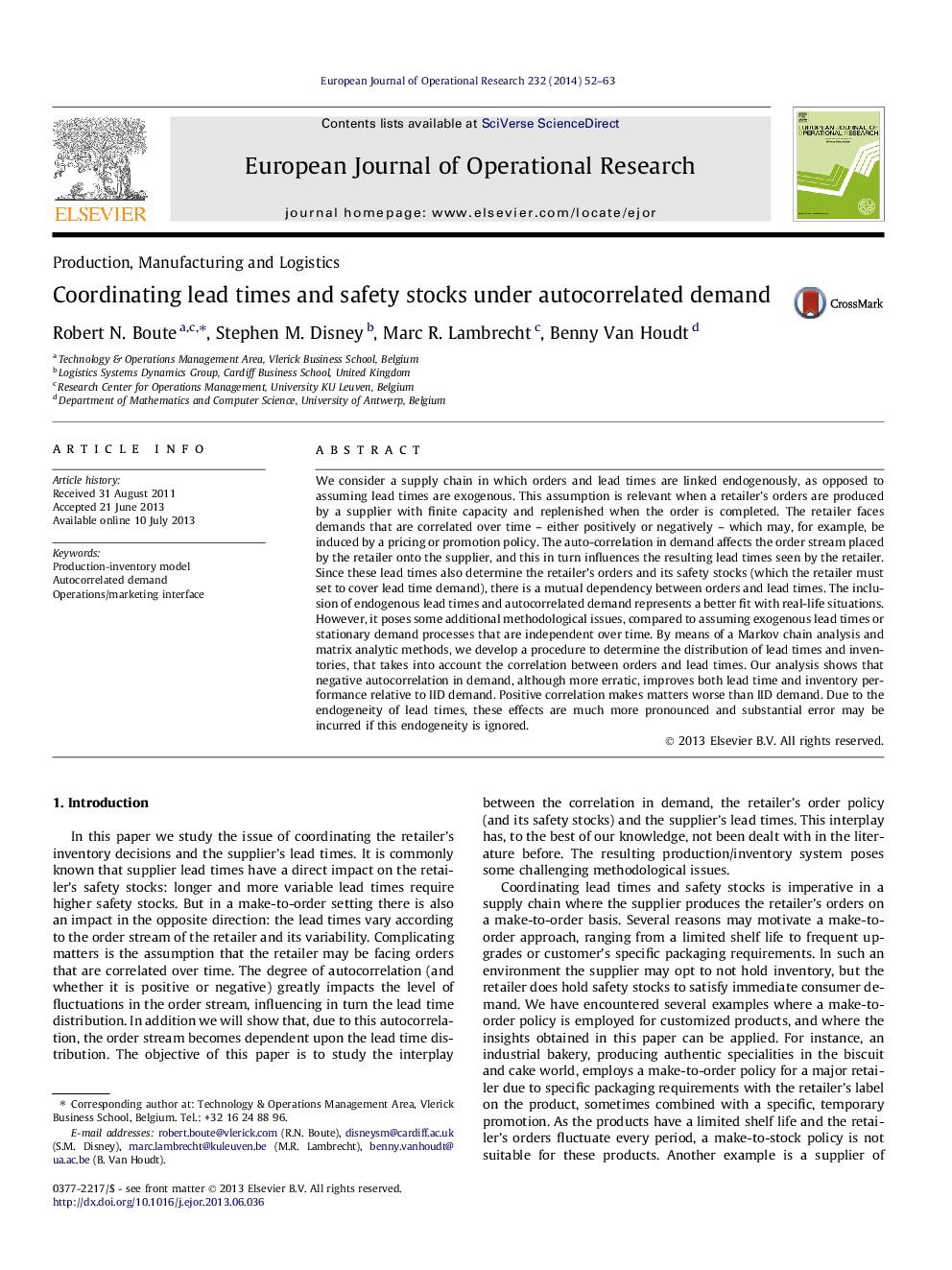| Article ID | Journal | Published Year | Pages | File Type |
|---|---|---|---|---|
| 479895 | European Journal of Operational Research | 2014 | 12 Pages |
•Analysis of production/inventory system with auto-correlated demand and endogenous lead times.•Interplay between correlation in demand, retailer’s order stream and supplier’s production lead times.•Negative correlation, although more erratic, improves lead time and inventory performance relative to IID.•Substantial error may be incurred if endogeneity of lead times is ignored.
We consider a supply chain in which orders and lead times are linked endogenously, as opposed to assuming lead times are exogenous. This assumption is relevant when a retailer’s orders are produced by a supplier with finite capacity and replenished when the order is completed. The retailer faces demands that are correlated over time – either positively or negatively – which may, for example, be induced by a pricing or promotion policy. The auto-correlation in demand affects the order stream placed by the retailer onto the supplier, and this in turn influences the resulting lead times seen by the retailer. Since these lead times also determine the retailer’s orders and its safety stocks (which the retailer must set to cover lead time demand), there is a mutual dependency between orders and lead times. The inclusion of endogenous lead times and autocorrelated demand represents a better fit with real-life situations. However, it poses some additional methodological issues, compared to assuming exogenous lead times or stationary demand processes that are independent over time. By means of a Markov chain analysis and matrix analytic methods, we develop a procedure to determine the distribution of lead times and inventories, that takes into account the correlation between orders and lead times. Our analysis shows that negative autocorrelation in demand, although more erratic, improves both lead time and inventory performance relative to IID demand. Positive correlation makes matters worse than IID demand. Due to the endogeneity of lead times, these effects are much more pronounced and substantial error may be incurred if this endogeneity is ignored.
